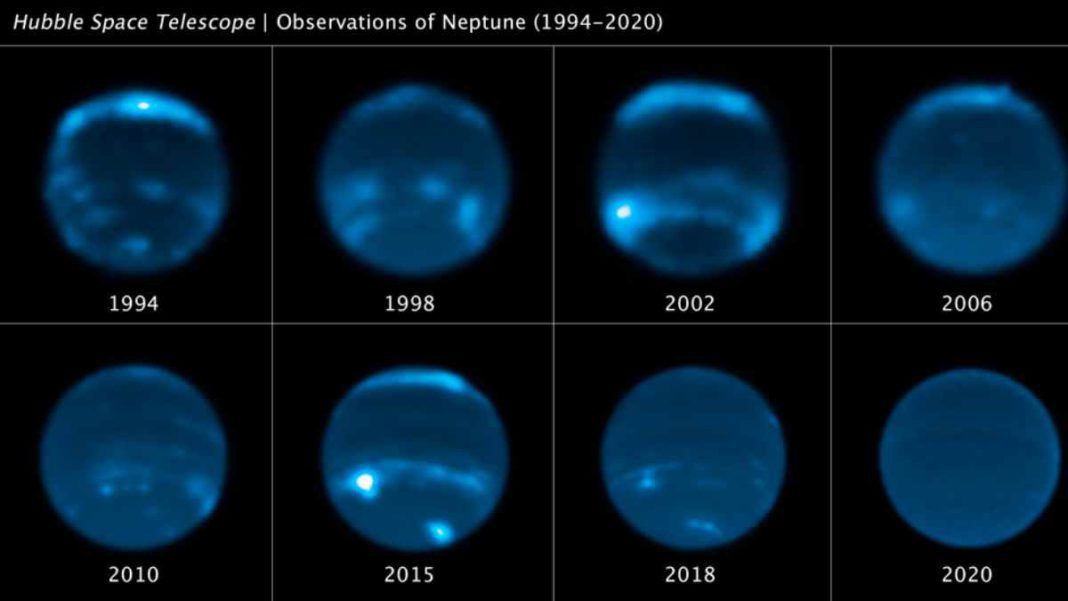UNITED STATES: Astronomers have made a groundbreaking discovery regarding the enigmatic disappearance of clouds on Neptune, the ice giant located in the distant reaches of our solar system.
Recent research, published in the journal Icarus, has unearthed an astonishing connection between the planet’s cloudy weather patterns and the solar cycle, unraveling a celestial mystery that has puzzled scientists for years.
Swift vanishing act
Neptune, with its striking blue-green atmosphere, has long fascinated researchers. However, in 2019, scientists noticed a remarkable phenomenon: the clouds that once swirled abundantly in Neptune’s atmosphere began vanishing at an unprecedented pace.
A co-author of the study, Imke de Pater from the University of California, Berkeley, expressed her surprise, noting that “cloud activity dropped within a few months.”
The surprising solar link
The research, which meticulously examined images of Neptune captured between 1994 and 2022, revealed an unexpected link between the disappearance of Neptune’s clouds and the solar cycle.
Despite being the farthest major planet from the sun and receiving only a fraction of Earth’s sunlight, Neptune’s cloud activity exhibited a strong connection to the intensity of ultraviolet (UV) light emitted by the sun.
Solar influence and photochemical reactions
The study suggests that the sun’s powerful UV rays play a pivotal role in Neptune’s cloud dynamics. Researchers observed that when the sun emits more intense UV light, Neptune tends to develop more clouds approximately two years later.
This intriguing relationship is believed to involve a photochemical reaction triggered by the sun’s UV rays. This reaction, when strong enough, appears to generate the clouds that have been observed on Neptune.
Reflectivity and brightness
The investigation further delved into Neptune’s reflectivity—its capacity to bounce back sunlight. Over the years, researchers noted fluctuations in Neptune’s reflectivity, which coincided with changes in cloud activity.
The planet’s reflectivity increased in 2002, dimmed in 2007, brightened again in 2015, and reached its lowest level ever observed in 2020, concurrent with the disappearance of most clouds.
The intricacies of cloud behavior
While the study has shed light on the fundamental connections between solar activity, UV light, and Neptune’s clouds, scientists acknowledge that additional research is required to fully grasp the complexity of these interactions.
The sun’s UV rays have the capacity not only to generate clouds and haze but also to darken them, influencing Neptune’s overall brightness.
Future observations and unanswered questions
As scientists continue to explore the mysteries of Neptune’s atmosphere, they emphasize the need for ongoing observations.
Recent images have shown a resurgence of cloud activity, particularly in the planet’s northern latitudes and at high altitudes, corresponding to the increase in solar UV flux over the past two years.
A stellar breakthrough
This latest research stands as a testament to humanity’s growing understanding of the intricate workings of our solar system. The connection between Neptune’s elusive cloud behavior and the solar cycle offers a glimpse into the dynamic and interconnected nature of celestial bodies, fostering a deeper appreciation for the wonders that lie beyond our planet.
Also Read: Enceladus Unveiled: Saturn’s Moon Holds the Secrets of Life



